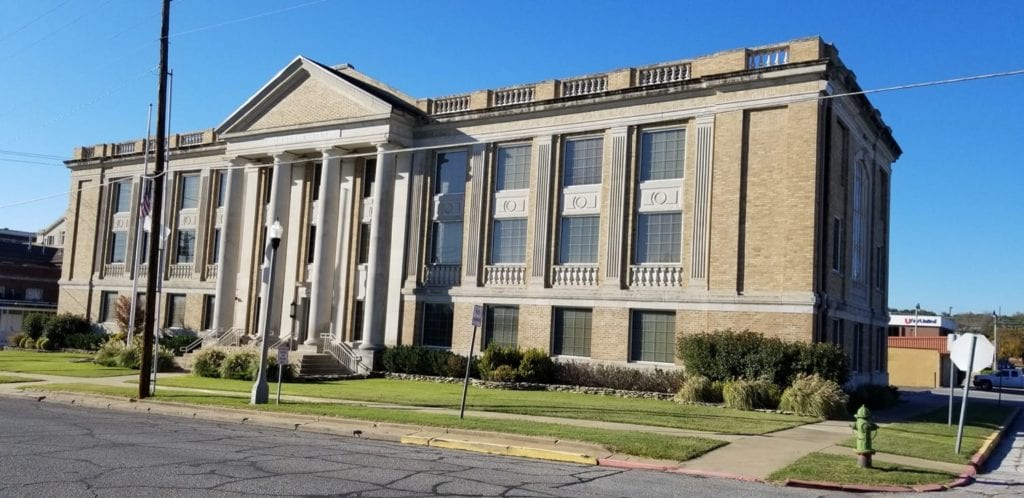The Board of County Commissioners revisited their debate on how to best split County Highway Funds between the three districts at their regular Monday meeting.
This week, the Commissioners brought new proposals for how to divide the funds in a fair way across Creek County. Newt Stephens of District #1 presented a 1% increase to District #1, putting them at 24%. District #2 would also gain 1% to have a total of 33%, with District #3 gaining 2% for 35% total. Stephens stated he needs to hire more workers, and these changes would allow him to hire the staff he needs and maintain the roads properly. Stephens said short of holding traffic counts throughout the county to accurately divide the money by travel density, he’s just trying to look at the bigger picture and make it as fair as he can. About 100 miles of road were added to District #1 during the recent redistricting, and Stephens says he believes he’s asking for a fair share based on this information.
Leon Warner, Commissioner of District #2, mentioned he appreciated the work Stephens put in and the progress he’s made from the last proposals. He continued on to ask if the goal is to make the amount fair between everyone, why should district #1 get more funding per road mile than the other two districts? Stephens responded that the usage of roads, maintenance, and upkeep make a huge difference in the longevity and integrity of any length of road. Warner agreed these factors do make a big difference, but district #2 has 1.5 percent more population than #1 has, and Oklahoma weather – which is the biggest factor in road maintenance and longevity – affects all County roads just the same. Heavy trucks like work vans, oil field trucks and semis also do quite a bit of damage to roads. One heavy semi is equal to multiple regular cars on road wear in just one cross of that length of road.
Warner and Stephens went over what the differences between the districts were that constituted #1 getting $1,800 more per mile. They agreed that different variables and elements cause more wear and tear on roads, and that not all roads age the same, but they couldn’t agree on whose roads were suffering the most of that wear and tear. Stephens argued he had to spend more on maintenance due to high wear, saying his roads saw over one hundred people a day whereas the other districts’ roads see maybe ten in the same time. He continued to say that rural roads don’t carry the same expectations as city and town roads, where crumbling asphalt roads gather many complaints from townsfolk.
Warner responded by saying he has waitlists to fix roads, simply because they don’t have the funding and sometimes they have to make sacrifices like only putting gravel on part of a road instead of the entire length needed. Jarrod Whitehouse, Commissioner of District #3, noted he and Warner do have asphalt roads, too, not just gravel.
A resident present at the meeting spoke up, stating she feels that where she lives gets forgotten, and that they do expect the same road maintenance as any other area. The concerned resident talked about how the oil field trucks shake not only the roads but her house, and that the roads are fixed only through patch jobs that create an uneven and bumpy road. She claimed her car is being shook apart by the quality of the roads being so poor.
Leon Warner took to the whiteboard in the room at one point, drawing a graph of each districts current spending per mile with the proposed funding per mile underneath them. He asked of Stephens, “[Whitehouse] used $5,000 per mile and you say you need $7,200 per mile for the same roads?” Currently, District #1 gets approximately $11,700 per mile and would have $7,266 with this plan. District #2 currently sits at $5,018 per mile, with the plan putting them at $5,651, and #3 has $4,701 per mile going to $5,508 if the plan is approved.
“If you look at the big picture – reality of cost per road … I feel extremely confident in how it’s going to turn out,” Stephens said. “All roads are not equal.”
Commissioner Warner mentioned he has more road density per mile, and Whitehouse has more of Sapulpa’s population in his district than Stephens. He told Stephens that although Stephens has made a big leap in his numbers, they’re just not there yet and they need to look at them again. Stephens assured the other Commissioners he wasn’t trying to get rich, just make everything fair. Whitehouse stated he just doesn’t want anyone getting laid off. All Commissioners agreed on this point, and all agree that not all roads are the same, but the funding for these roads has still not been agreed on. There was no action taken by the board at this time and they will revisit the funding split later.











